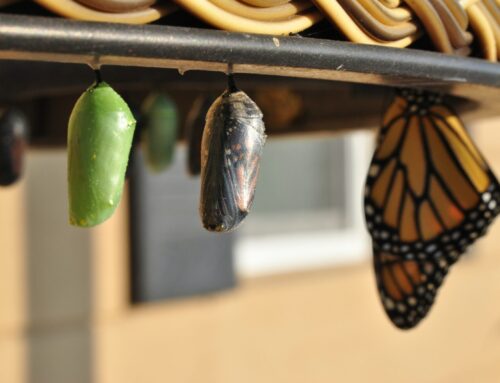By Randy Hain
If you are reading this post, you are human. You are imperfect, just like me and everyone else you know. I hope you will embrace the obvious truth of this, but also recognize how most of us are fearful of letting people see our flaws and imperfections…even though we know (and everyone else knows) we have them. Why is it so difficult to be vulnerable?
A few clear obstacles to vulnerability I have observed include fear of being judged, concern our vulnerability will be used against us and having the right words to use when sharing our vulnerability. We may also incorrectly assume that being vulnerable usually involves the sharing of deeply personal and emotional areas of our lives, instead of recognizing that asking for help, saying we don’t know the answer, or owning a mistake are also appropriate forms of vulnerability. Perhaps we should consider viewing vulnerabilities as existing on a spectrum from 1-100, with more comfortable forms of vulnerability existing near the lower end and more uncomfortable manifestations of it living near the higher end.
As I reflected on this topic, I came to the realization that the people I am closest to and most admire are all exceptional at being vulnerable. These individuals are relatable, accessible, trustworthy and most of my best relationships exist within this special group. They routinely transform what many may see as their liabilities and challenges into positive strengths that inspire, motivate and help others. How do they do it? What sets them apart?
Here are five helpful approaches/mindsets I have observed and experienced for turning vulnerabilities into strengths:
- Discernment and good judgment. The appropriate sharing of vulnerability is guided by the use of discernment and good judgment. Always read the room, know your audience and consider the timing of your words. Be mindful to not overshare. Sharing should always be considered a good thing, but sometimes we need to get to know someone over time before sharing really personal things or consider sharing 1:1 instead of with a group. Pick your moments and audience well.
- Critical for relationship building. Do you have any great relationships where some level of sharing vulnerabilities does not exist? Likely not. We should all be motivated to build thriving relationships inside and outside of work and the mutual sharing of weaknesses, flaws and challenges actually draws us to other people. Our vulnerability invites others to be vulnerable. “Friendship is born at that moment when one person says to another: ‘What! You too? I thought I was the only one.”– C.S. Lewis.
- Tell inspiring stories. The stories that inspire me most are not always about triumphs and successes, but about overcoming struggle, dealing with adversity or even lessons learned from failure. I often write about my oldest son who has autism. I share his story because I am very proud of how he navigates the difficulties of everyday life and inspires everyone who knows him. Sometimes our toughest challenges, as difficult as they may be to endure, can provide hope and inspiration for others if we are willing to share.
- Seek teachable moments. The best leaders I know are vulnerable leaders. Why? They consistently seek out teachable moments for their colleagues and harness the power of vulnerability to make those moments memorable. For example, I worked with a coaching client some years ago who was insatiably curious, an exceptional listener and strong developer of her people. She always wanted to see how her team was doing, where they needed help and how they were growing. Her “secret sauce” ingredient to those conversation was her willingness to share moments of struggle and failure from her own career with the team. She was relatable and believable to those around her as she let them know she understood their issues and her helpful coaching was often the fruit of her rich experiences.
- Humility activates vulnerability. It is almost impossible to truly be vulnerable without being humble. The humility of admitting we are human, imperfect and acknowledging that we make mistakes activates the practice of vulnerability. “…the key to being vulnerable is humility. People who cannot come to terms with the truth about themselves—and truth is the essence of humility—will not be comfortable with vulnerability.” – author & leadership expert Patrick Lencioni
Sometimes, the practice of vulnerability also requires patience and grace. I was not very vulnerable early in my career, but getting married, having children, growing in my faith, experiencing the challenges of life and the simple passage of time have helped me grow considerably in this area. I have learned to be patient and give myself grace just as others have extended these same gifts to me.
From my own experience, I would suggest that our ability to flourish personally and professionally is interlinked with the appropriate practice of vulnerability. If you reflect on this post and feel that you are not as vulnerable as you could or should be, be patient with yourself and do what works for you. Take a few baby steps. Practice being more vulnerable with people you trust. Ask for help and accountability from a few key people in your life. Let’s get started.
Want to dive deeper? Check out the latest episode of The Leadership Foundry Podcast featuring founders, Randy Hain and Brandon Smith, discussing the topic of vulnerability.








